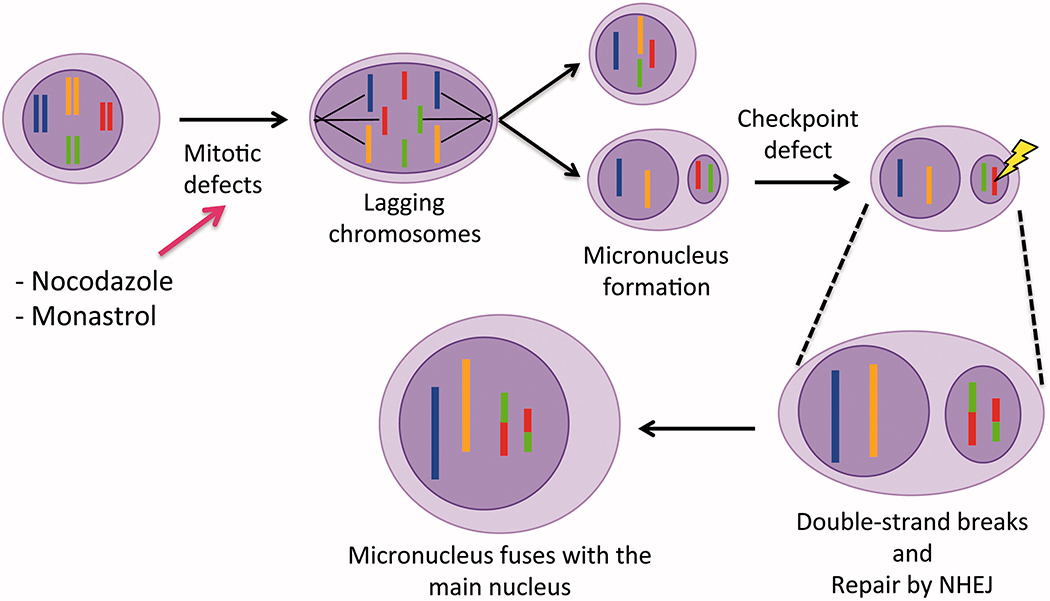Figure 4.

Model describing the association between chromosome mis-segregation, micronuclei, and chromosomal rearrangements. Chromosomes that are lagging during anaphase as a consequence of mitotic defects are encapsulated by nuclear envelope to form a micronucleus (MN). Within the MN, chromosomes tend to sustain frequent double-strand breaks most likely due to changes in chromatin conformation. This induces repair by non-homologous end joining (NHEJ), an error prone mechanism that can produce chromosomal aberrations. As MN may merge back with the main nucleus, this will result in the rearranged chromosomes becoming a part of the genome as described by Janssen et al. [2011].
